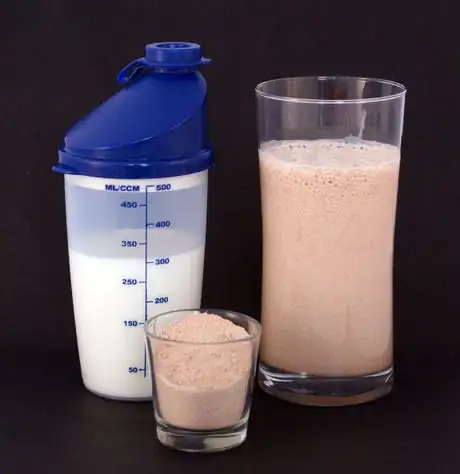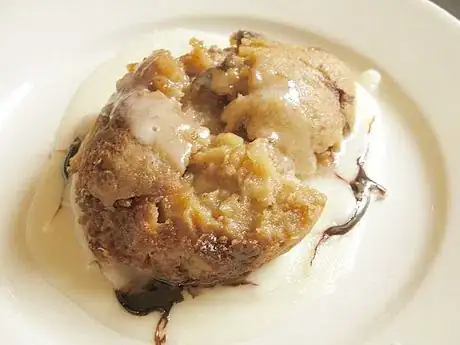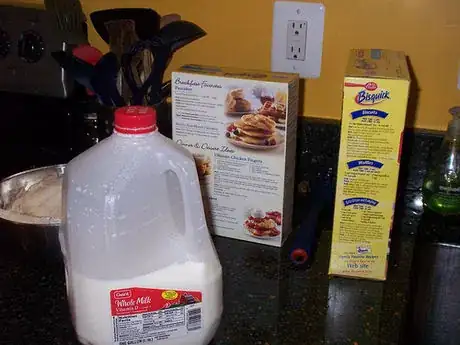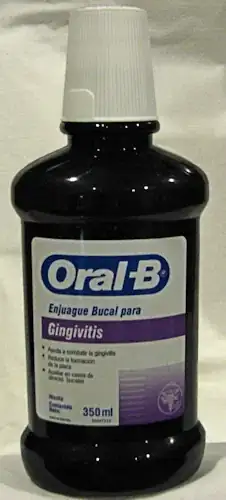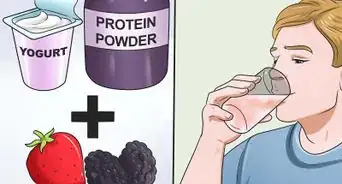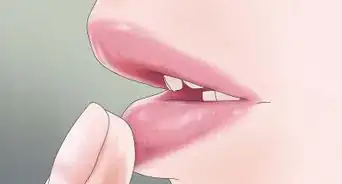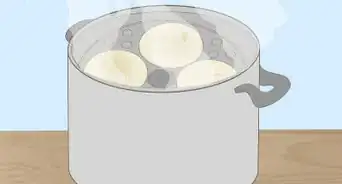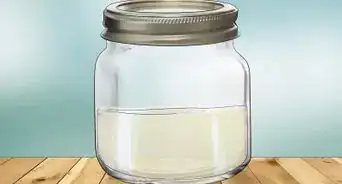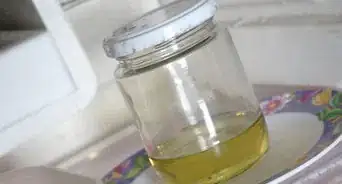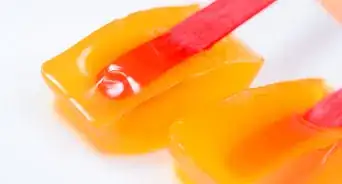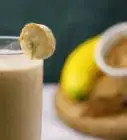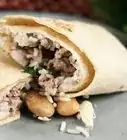wikiHow is a “wiki,” similar to Wikipedia, which means that many of our articles are co-written by multiple authors. To create this article, 15 people, some anonymous, worked to edit and improve it over time.
This article has been viewed 214,536 times.
Learn more...
At some point in your life, you might find that you or someone you know needs to eat without chewing. The restriction might be due to jaw, mouth, or gastrointestinal surgery, the removal of wisdom teeth, freshly adjusted braces, or trouble swallowing (also called dysphagia). Following a soft diet does not need to be bland or a chore. You will most likely be able to eat solid food again soon.
Steps
-
1Understand your restrictions, both what you can and cannot eat, and why your diet is restricted. For example, if a doctor prescribes some form liquid or soft diet because of a medical condition or in connection with surgery, the restrictions may be greater than if is soft diet is recommended because of difficulty chewing. Always follow your doctor's advice, of course, but knowing your specific restrictions enables you to be more creative within them.
- Know how long you should expect the restricted diet to last.
- Know if there are specific foods you should avoid.
- Find out if you can safely "chew" soft foods by mashing them between your tongue and the roof of your mouth.
- Find out whether you can have solids that are pureed or mashed.
-
2Start with the basics of a clear liquid diet. A doctor may order a clear liquid (or clear fluids) diet in case of lacerations or incisions in the mouth, a compromised digestive system, or other reasons. A doctor who orders this diet should also advise you of how long you must restrict yourself clear liquid. A clear liquid diet is limited to liquids that you can see through, such as apple juice and other pulp-free fruit juices, gelatin deserts like Jell-O (even though they are solid at room temperature), clear sodas, tea, and clear broths. Ice pops and other ices can also be clear fluids, provided they are not made with pulp or sorbet (sherbet).Advertisement
-
3Add "full fluids" as soon as it is appropriate to do so. Full fluids can include suspended solids as well as all the items that are clear liquids. If you can have full fluids, you can have most fluid nutritional supplements; milk; milkshakes; yogurt (well mixed and without fruit chunks); smooth hot cereals, such as oatmeal; juice with pulp; and pudding.
-
4Look for foods that are already soft. Smooth, hot cereals, such as oatmeal, soups that are pureed or strained, applesauce, smoothies, mashed potatoes or sweet potatoes, scrambled eggs, custard, cottage cheese, and many other foods are soft enough to eat without chewing.
-
5Use your blender and your fork to chew for you. Chop soft pasta into small pieces with a fork. Puree a chunky soup and see what you get. Mash some potato salad or put it through a blender. Mash or puree just the contents of a burrito or sloppy Joe.
- Some small chunks may be all right, as long as you can swallow them without chewing.
- Blenders work best with enough liquid. If potato salad is sticking to the walls of the blender and not moving, add a bit of milk, yogurt, water, or sour cream. Try to add liquids with flavors that will be compatible with what you're blending. Use broth, water, barbecue sauce, or ketchup for meats. Adding liquid will also help if you need to get the food through a straw to eat it.
- Some foods work better than others when blended. If you're not sure, try a small amount and see what happens.
-
6
-
7Dissolve foods. If you can't eat bread because you can't chew it, could you have bread pudding or pancakes reheated with plenty of syrup, instead?
-
8Eat as wide a variety of foods as your diet permits, and be creative. Just about any fruit or cooked vegetable can be pureed to the point where it need not be chewed. Many entrees can, too. Aim for a balanced mixture of starches, proteins, fruits, veggies, fats, and the occasional sweet treat, just as you would if you were chewing.
-
9Have dessert. Many desserts are high in calories, so if there is any concern about taking in enough calories, this is a very good place to add some.
-
10Avoid very chewy things. You may be able to grind tuna or soft-cooked chicken enough to eat it without chewing, but steak is probably not a good option while you are on a liquid diet or just coming out of one.
-
11Take steps to add calories if it is necessary to do so.
- Eat smaller, more frequent meals.
- Use whole milk, milk products, and cream.
- Add protein powder, powdered supplements, powdered milk, or even chocolate syrup to foods.
-
12Look out for your teeth while eating a soft or liquid diet. Crunchy and crispy foods serve to help clean teeth and stimulate gum tissue. Ask your doctor or dentist whether you should try to brush your teeth, or, failing that, whether you should rinse your mouth with water or mouthwash after eating.
Community Q&A
-
QuestionWhat is a soft diet for pancreatitis?
 Community AnswerJello and light colored juices (apple, white grape, etc.) at first. A day a two later start introducing oatmeal, cream of wheat, and puddings until you feel that you are ready for more solid foods.
Community AnswerJello and light colored juices (apple, white grape, etc.) at first. A day a two later start introducing oatmeal, cream of wheat, and puddings until you feel that you are ready for more solid foods. -
QuestionWhat are some foods that I can safely eat following a hernia operation?
 Community AnswerI just had hernia surgery a week ago today. My doctor discharged me from the hospital with a “full liquid diet” instruction sheet. You can find this online. I was very worried that I would be starving at this point, but I actually have not been. I am having very liquid-y soups, grits, pudding and gelatin. Good luck to you!
Community AnswerI just had hernia surgery a week ago today. My doctor discharged me from the hospital with a “full liquid diet” instruction sheet. You can find this online. I was very worried that I would be starving at this point, but I actually have not been. I am having very liquid-y soups, grits, pudding and gelatin. Good luck to you! -
QuestionHow do I eat without some chewing?
 Community AnswerTake in little bits of soft food and swallow it down. It will take a bit more time, but this is the only way you can do it.
Community AnswerTake in little bits of soft food and swallow it down. It will take a bit more time, but this is the only way you can do it.
Warnings
- Not all of these foods will be appropriate for all diets. Understand your own restrictions and talk to your doctor if you have questions.⧼thumbs_response⧽
About This Article
To follow a soft diet, keep in mind that your exact diet will depend on the reason you're unable to eat hard foods, and you should always follow your doctor's advice. If you were instructed to follow a clear liquid diet, stick with liquids that you can see through, like apple juice, gelatin, and broth. If you're on a full fluids diet, you can have other liquids as well, like milkshakes, yogurt, and oatmeal. You can also use a blender to puree solid food so it's soft enough to eat, or you can cook certain foods until they're soft enough, like vegetables. To learn how to take care of your teeth while you're on a soft diet, scroll down!
